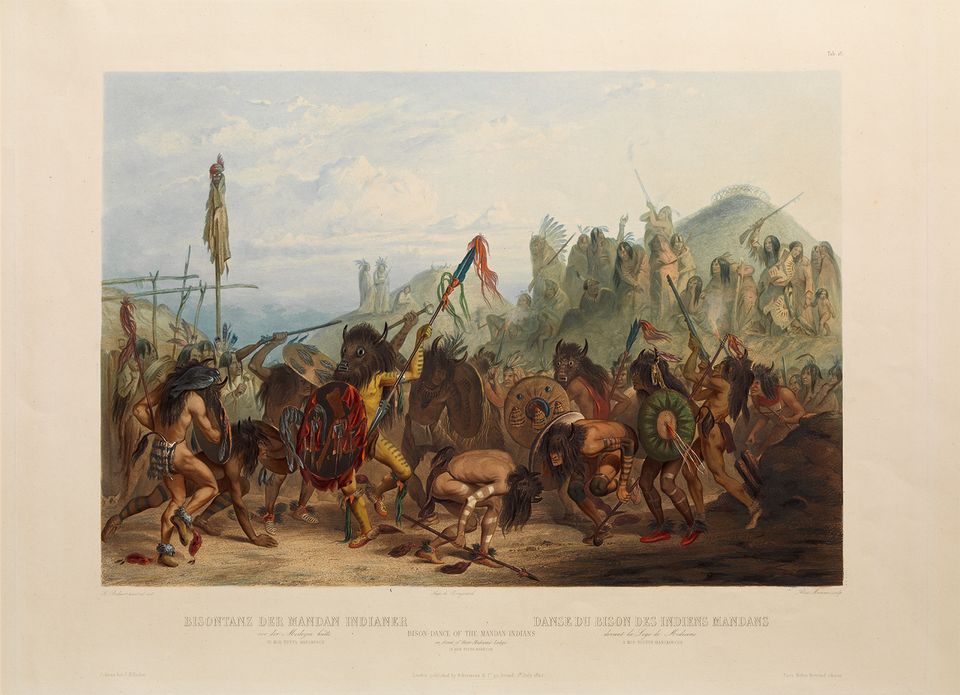
After Karl Bodmer, Alexandre Damien Manceau, engraver, Bison Dance of the Mandan Indians in front of Their Medicine Lodge in Mih-Tutta-Hankush, 1842, hand-colored aquatint, plate mark: 16 1/2 x 21 5/16 in., image: 12 1/16 x 17 3/8 in., Joslyn Art Museum, Omaha Nebraska, Gift of the Enron Art Foundation, 1986.49.542.18, Photograph © Bruce M. White, 2019.
About this Artwork
The Bison Dance was part of the O-Kee-Pa ceremony, sacred to the Mandan. Although Prince Maximilian and Bodmer did not witness this rite themselves, the Mandan chief Mató-Tópe authorized a tribal elder named Dipäuch to explain and describe each element of the ceremony. Based on this account, Bodmer composed this dramatic scene after he returned to Paris in 1834.













